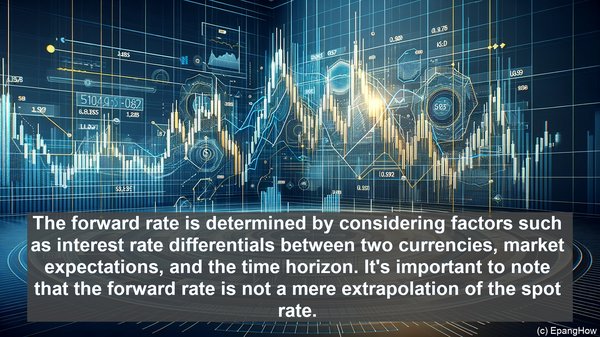Introduction: The Dynamic World of Foreign Exchange
Hello and welcome! The realm of foreign exchange is a bustling landscape, where currencies from around the globe intertwine in a complex web. Amidst this intricate network, two rates hold paramount importance: the forward rate and the spot rate. While both are integral to the forex market, they serve distinct purposes. Today, we’ll explore the nuances of these rates, their differences, and the implications they hold for traders, businesses, and the global economy.

Spot Rate: The Present Value of Currencies
Let’s begin with the spot rate. In essence, this rate represents the immediate value of a currency in relation to another. It’s the rate you’ll find when you search for ‘currency exchange rates’ on the internet. The spot rate is influenced by various factors, including interest rates, inflation, geopolitical events, and market sentiment. It’s a reflection of the current supply and demand dynamics in the forex market. For instance, if the demand for the US dollar is high, its spot rate will likely appreciate against other currencies. The spot rate is crucial for businesses engaged in international trade, as it determines the cost of goods and services when transactions occur in different currencies.
Forward Rate: Peering into the Future
While the spot rate encapsulates the present, the forward rate offers a glimpse into the future. It represents the anticipated value of a currency at a specified future date. Traders and businesses often utilize forward contracts to lock in a rate today for a transaction that will occur in the future. This provides them with certainty amidst the volatility of the forex market. The forward rate is determined by considering factors such as interest rate differentials between two currencies, market expectations, and the time horizon. It’s important to note that the forward rate is not a mere extrapolation of the spot rate. It can deviate significantly, especially in times of economic uncertainty or when there are divergent monetary policies between countries.

Interest Rate Parity: A Key Link
To understand the relationship between the forward rate and the spot rate, we must delve into the concept of interest rate parity. According to this principle, the difference in interest rates between two countries should be reflected in the forward rate. For instance, if the interest rates in Country A are higher than in Country B, the forward rate should incorporate this disparity. This ensures that investors are not at an advantage or disadvantage when it comes to investing in either country’s currency. However, in reality, interest rate parity may not always hold true due to various factors, such as capital controls, market sentiment, and government interventions.
Implications for Traders and Businesses
The distinction between the forward rate and the spot rate has significant implications for traders and businesses. For those engaged in forex trading, the ability to accurately predict and interpret the movement of these rates is crucial. It can help them identify arbitrage opportunities, manage risk, and make informed trading decisions. On the other hand, businesses involved in international trade need to carefully consider both rates when planning their transactions. Fluctuations in the spot rate can impact the cost of imports and exports, while the forward rate provides them with a tool to hedge against currency risk. By utilizing forward contracts, businesses can mitigate the potential adverse effects of currency volatility on their bottom line.
